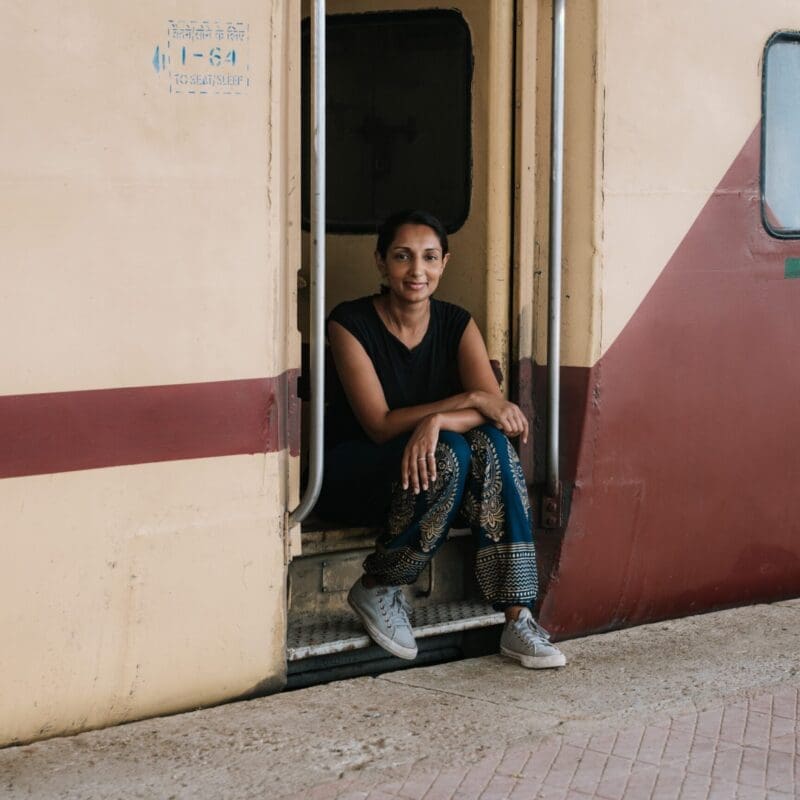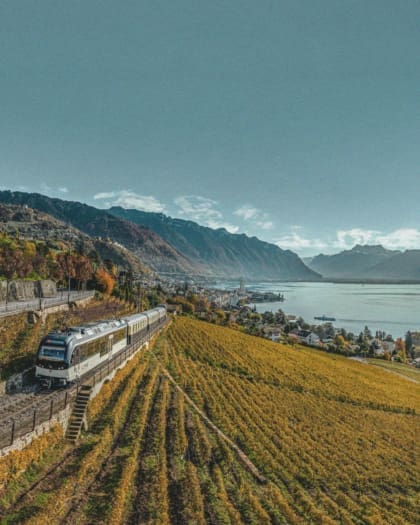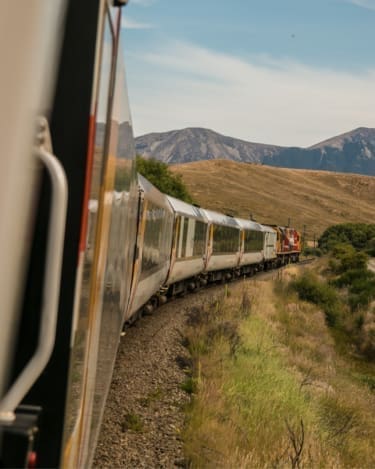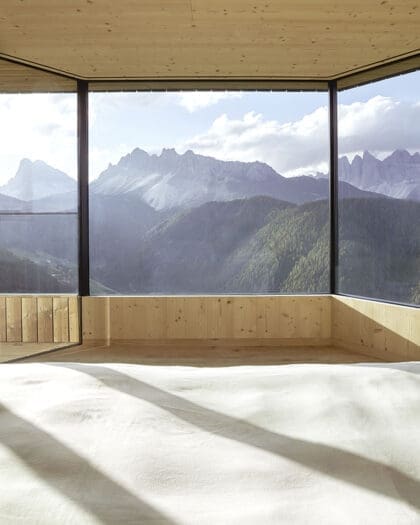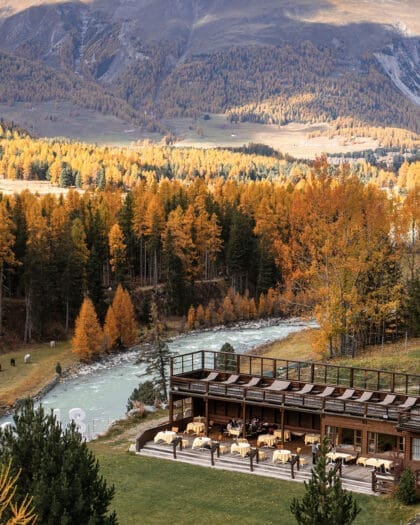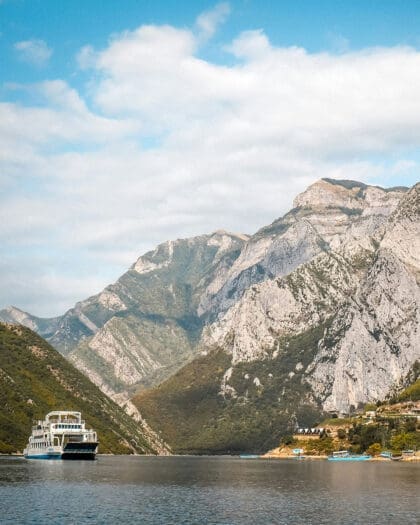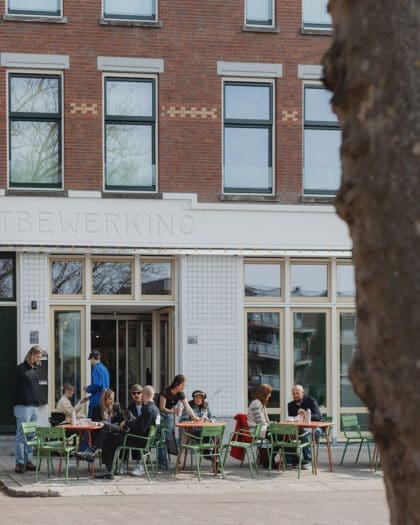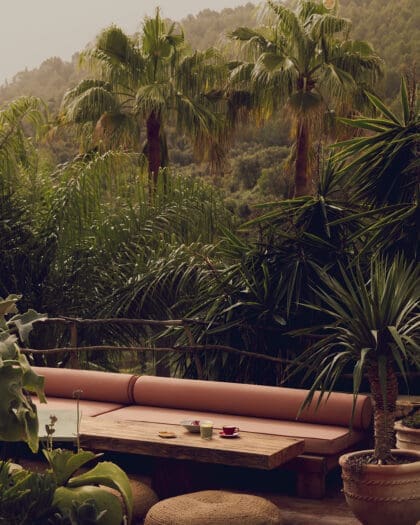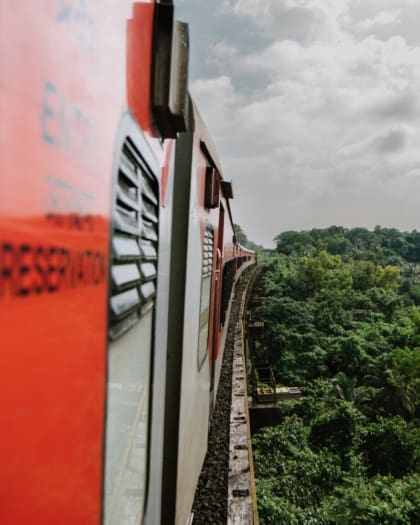
An inspirational rail journey aboard India’s Kerala Express
Running from Delhi in the north to the southern state of Kerala, an epic 46-hour journey on board the Kerala Express brings writer Monisha Rajesh closer to India’s cultures, traditions and communities
Over the roar of engines, vendors’ cries and slamming of doors, I strained to decipher the Hindi announcement, searching a fellow passenger’s face for clues. He frowned, then pouted and flicked his wrist which translated loosely as “who knows?”. It was just after 8pm and with five minutes until departure, the Kerala Express to Kottayam was nowhere in sight. Platform 3 at New Delhi railway station was crammed with students, pilgrims, backpackers, hawkers, multi-generational families and a small circle of bearded sadhus who’d begun to set up deities to perform puja.
Bodies stretched out under block-printed sheets, mothers rocked babies in laps and rucksacks doubled as pillows for passengers unfazed by the late arrival. After a couple of weeks of travelling around India by train, I’d come to admire the way in which a country of more than 1.4 billion people had mastered the art of indifference when it came to delays. Understanding that their energy was better spent eating hot pakora, picking teeth or idling by a tea stand making chit chat, these passengers had taught me to let go of things I couldn’t control – one of many lessons I learnt on board the world’s greatest railway.
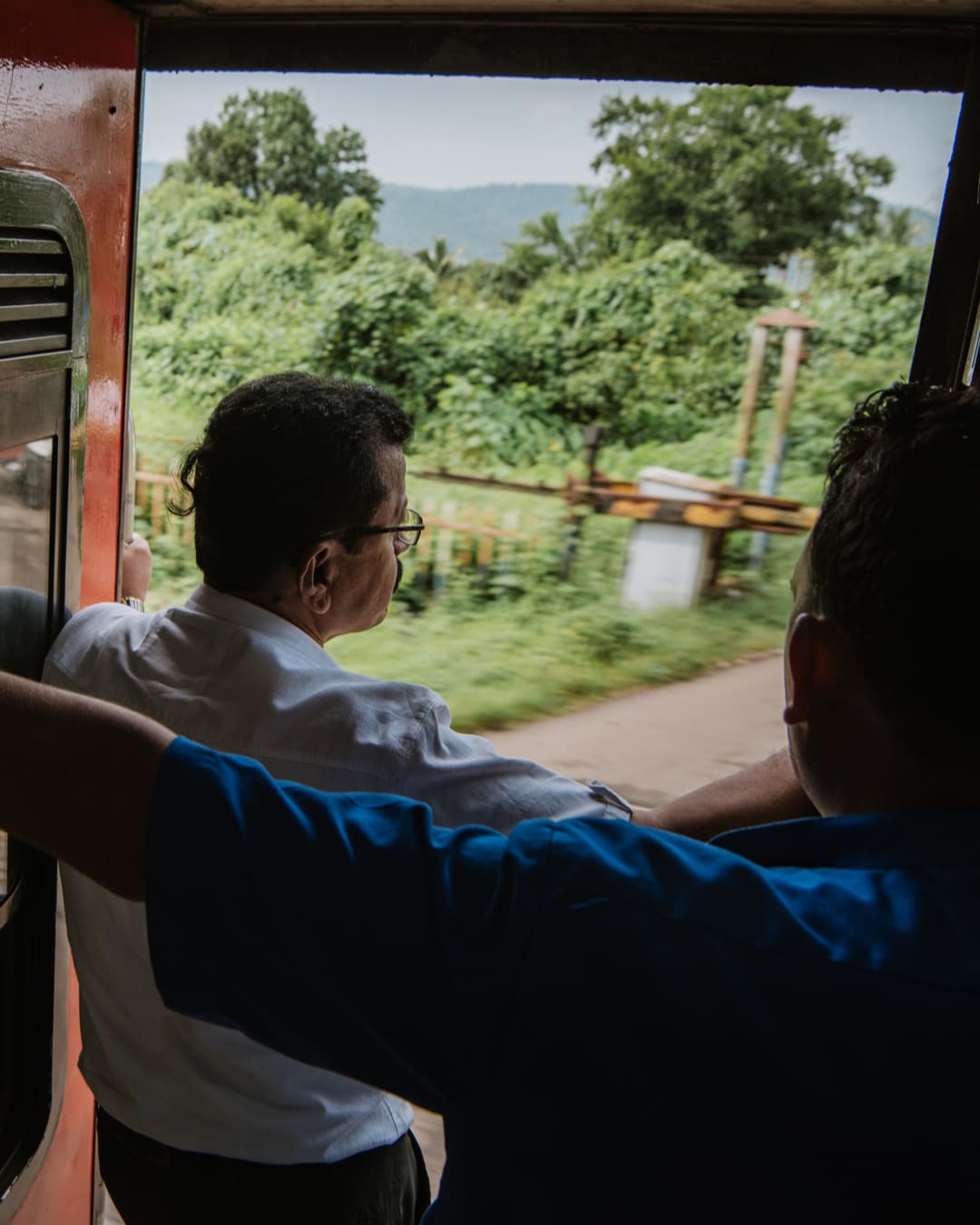

Awaiting the Kerala Express
A couple of chapters into a paperback, I looked up to where a pair of orbs pierced the darkness and a horn blared. Deeper and longer the second time, this horn galvanised everyone into action: blankets and kids were gathered, boxes stacked and porters bent their knees to place bundles on their heads. Half an hour late to arrive, the Kerala Express wasted precious time, allowing passengers no more than five minutes to shove each other up the steps before it slid away. Once on board, it was like watching the opening credits of a favourite TV show, so familiar was the routine.
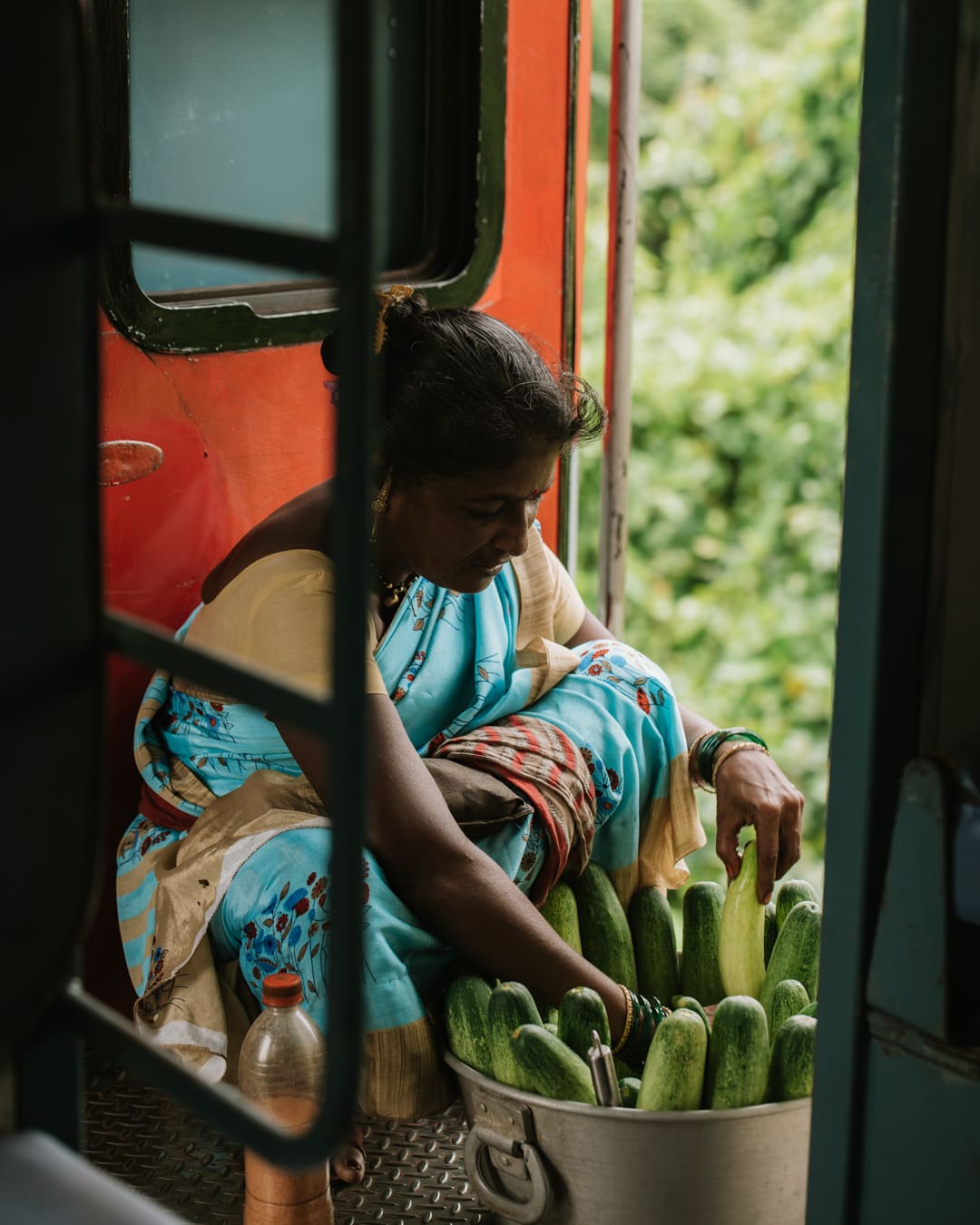
As the Delhi traffic honked by the windows, my companions fussed over luggage, plugged in phones and bickered about space before hauling themselves into berths and settling into a harmony so specific to Indian Railways. Around me, passengers were unpacking wooden-handled bags of fruit, tightly rolled chapatis and pots of pickle and curd. Arranging their meals on sheets of newspaper, they pulled their ankles into a cross-legged position and ate as hawkers called up the aisle carrying baskets of chicken biryani, hot samosas and omelette sandwiches – fresh from the onboard pantry car.
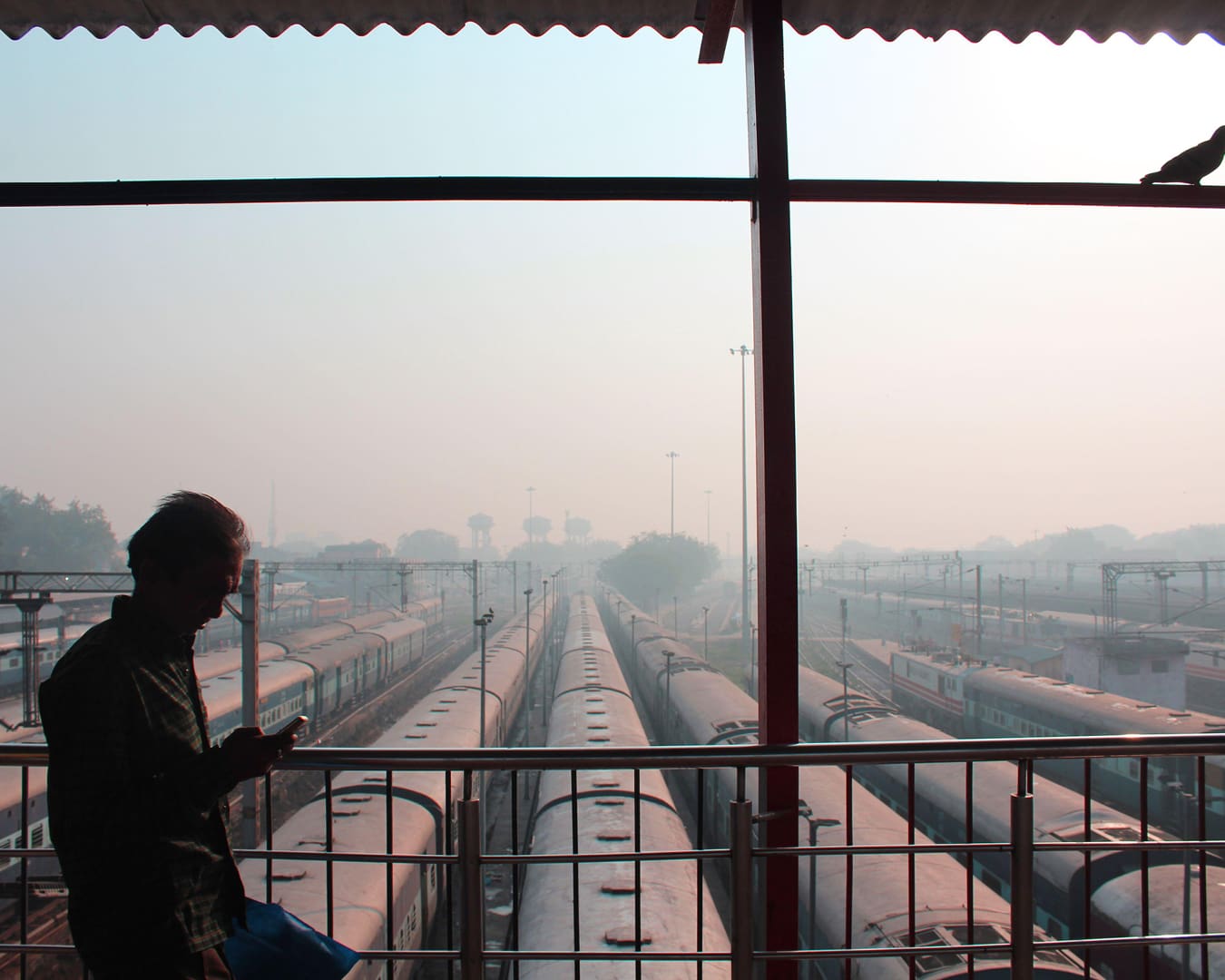
A cross-country odyssey
Crisp samosa in hand, I swayed down to the vestibule and perched on the top step of the open doorway, looping an arm through the handhold. Hot air billowed through, bringing with it the smell of cooking smoke. The train clanked through the outskirts of the Indian capital, making its way past the backs of houses where hurricane lamps glowed in kitchens and families wound down for the night.
Neon hoardings rose over restaurants where workers hosed down pots, shooing away stray dogs, and a group of waiting drivers dealt cards across a bonnet. Invisible birds shrieked from darkened trees and the stench of swamps rose from below. As we gathered pace I caught sight of a wedding party, the thump of drums carrying over the grind of traffic.
This was a two-night journey, one that would take 46 hours to wind down seven states, passing through Maharashtra’s forests, Madhya Pradesh’s river valleys and Tamil Nadu’s temples. In total, it would stop at 32 stations, before arriving in Kerala, at the southern tip of India. Prepped with a fully loaded Kindle, peanut candy and mental resolve, I was ready for the ride. By 9pm the lights dimmed, and I took myself to bed, shaking out sheets from paper packaging and shuffling under the blanket as the train rocked through the night.
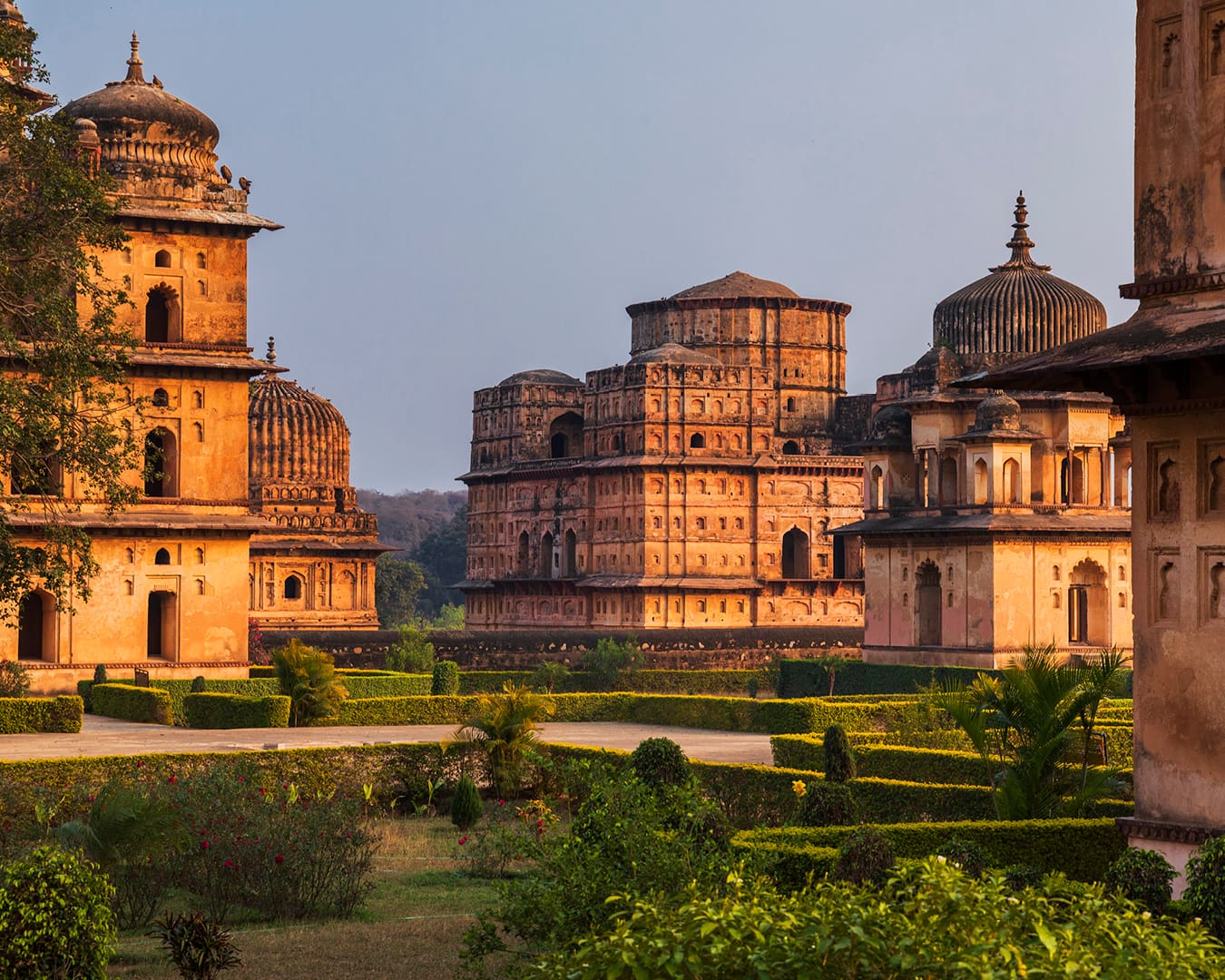
Pastimes and fresh poha
The following morning I woke to a household in action: passengers combed hair, gargled with bottled water and stacked up blankets, clicking berths into place so everyone could take their seats for the day’s ride. Papers were spread out, coffee steamed and a game of rummy was already under way beneath me. In the background of it all the train belted through the dryness of rural Madhya Pradesh, getting on with its job while passengers got on with theirs.
Shutters rolled up on village shops, wet-haired children rode bullock carts to school and tea towels dried on washing lines strung in trees. Vendors hawked plates of fresh poha, a regional breakfast staple made from flattened rice and onions, and I sat with a plate, enjoying the morning light.

Hours passed with ease as the train snaked south, a colourful cast of characters hopping on and off. A chorus of hawkers made melodies while the scenery morphed from one state to the next, to the soundtrack of Hindi, Marathi and Urdu, dialects blurring over borders. That night, a student from the Indian Institute of Technology joined me at the doorway as the scent from burning fields billowed through the carriage. Ajay was travelling back to Kottayam in Kerala to visit his family and was a regular passenger on the train. He was baffled by my affinity for long-distance train journeys, regularly choosing them over India’s budget airlines, assuming few would enjoy the two-day stretch instead of a three-hour flight. Like me he revelled in the gift of time: reading, working, snoozing, chatting and making major life decisions as the warm wind mellowed his thoughts.
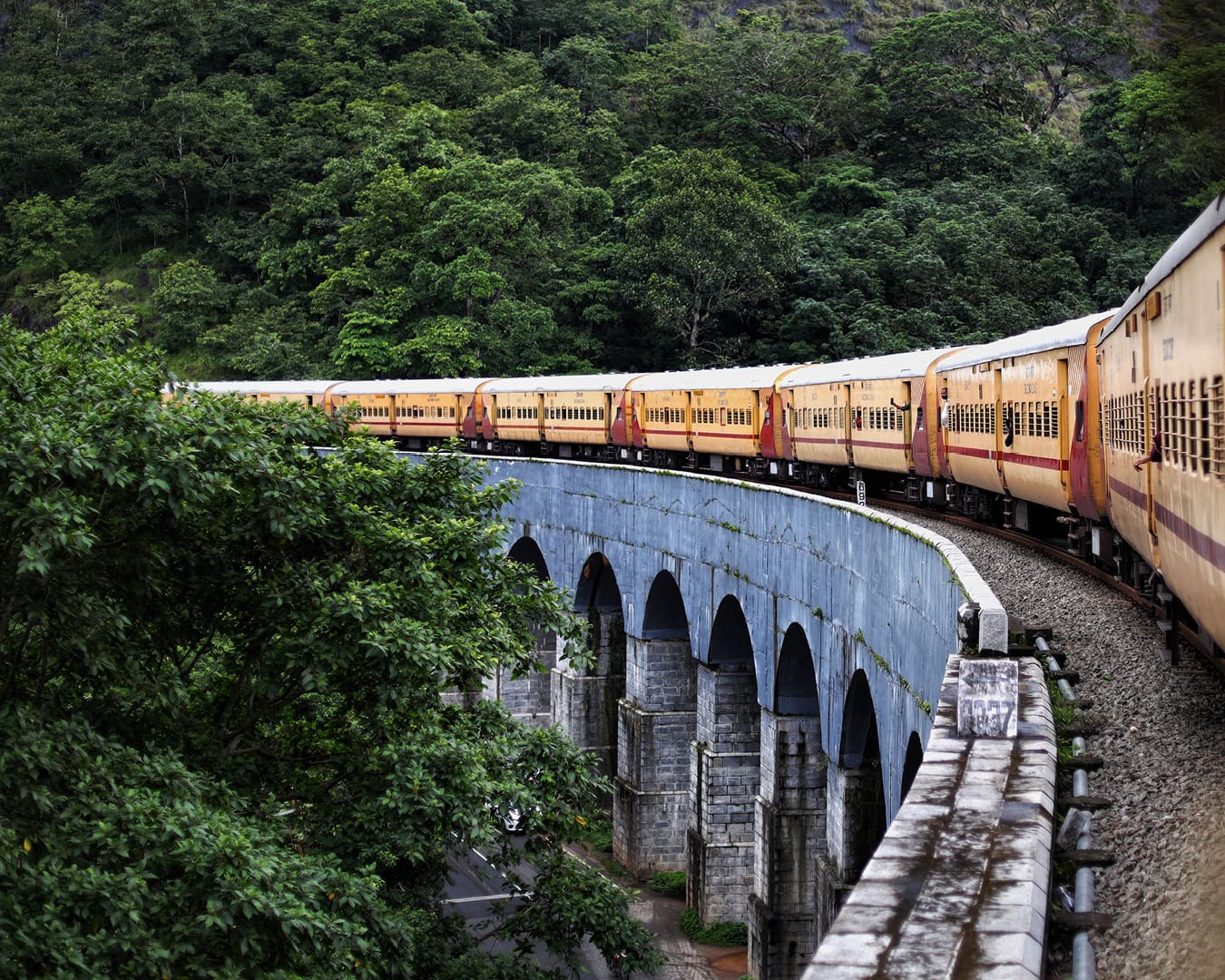
In sight of Kerala
Returning to my seat, I found my companions had departed and a new group of characters had joined at Vijayawada: a family on pilgrimage to the Tirumala temple in Tirupati, Andhra Pradesh. As they laughed with one another I detected my mother tongue of Telugu, which I had never learnt but recognised as the language my parents spoke when they wanted to conceal their conversation from me and my brother. Thrilled to discover a fellow Telugu, they were indignant that I should learn my own dialect and chatted in broken English, teaching me Telugu words and poring over photos of my family.
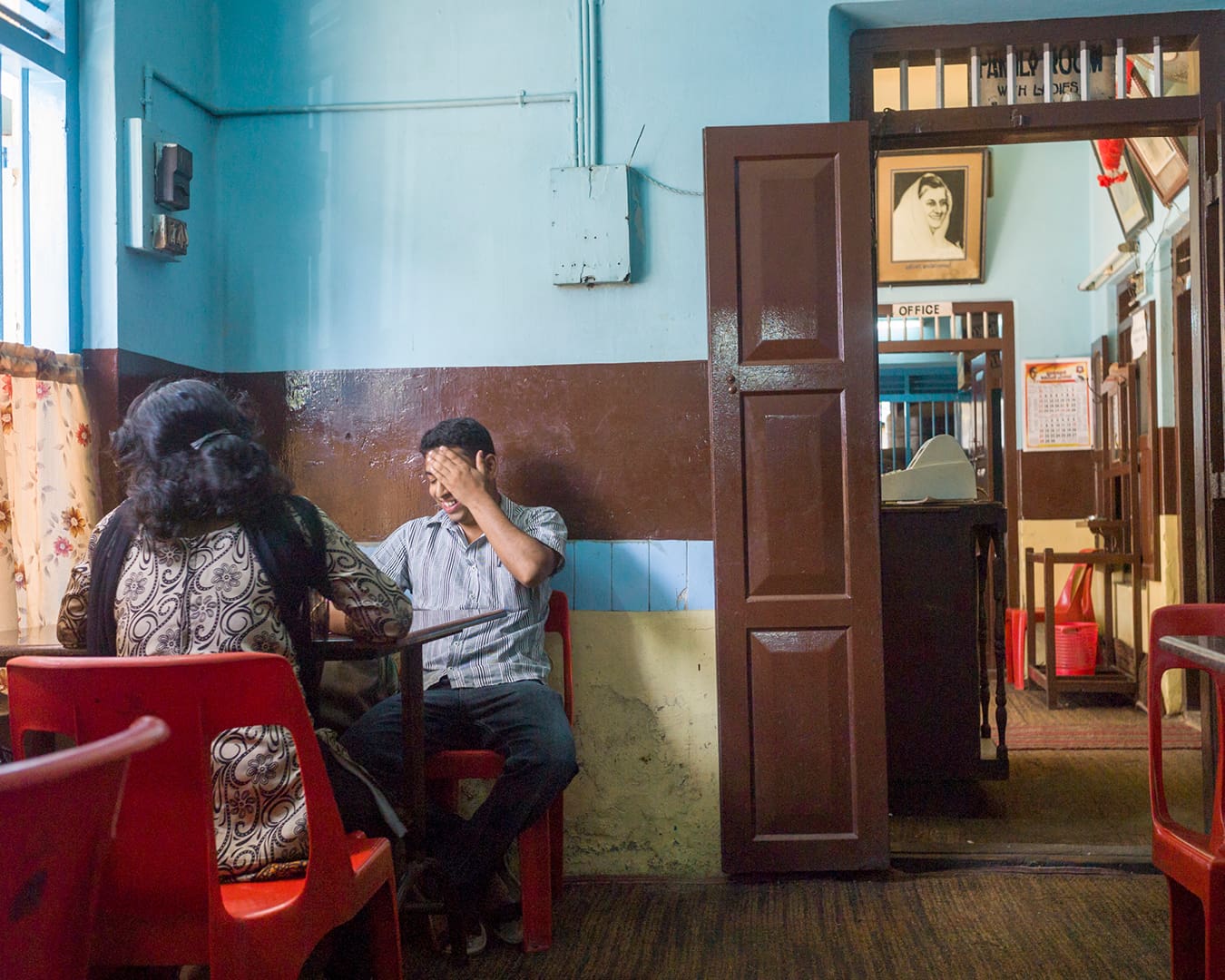
On the second afternoon, I sat on the steps as the train drew into the station at Thrissur in mid Kerala, where dosa was frying on the platform. Flicked up and folded with a knife edge, one was swept onto a foil plate and handed to me just as the train jerked and pulled off through landscape now fresh, green and gleaming with lakes. Criss-crossed palms lined waterlogged paddy, small white churches emerging in between. Men strolled by wearing crisp white mundu wrapped at the waist, cyclists paused to wave and a handful of nuns boarded in the final hour.
Known as God’s Own Country, Kerala lived up to the name as coconut groves fanned into view, fronds slashing at the windows, the scent of wetness in the air. Before departure I’d worried that two days would take its toll, but as we slowed into Kottayam station, I felt wide awake to India’s land, culture and people in a way I’d never known before.
